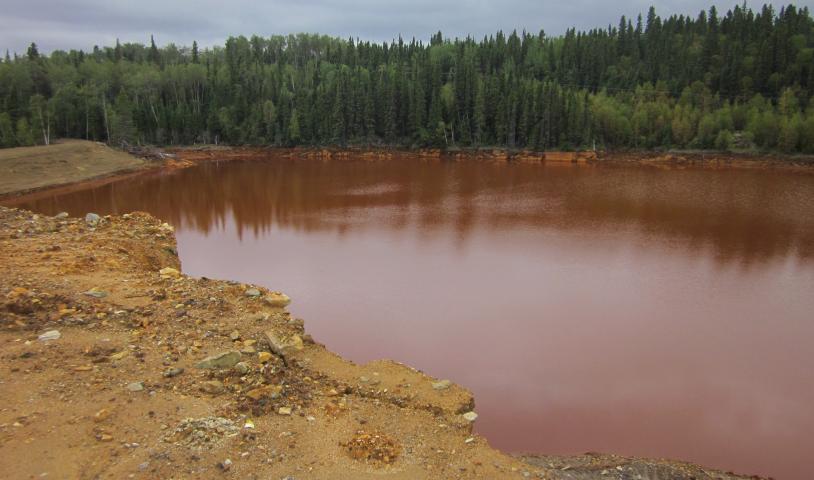Seeking Answers in Sherridon: My Second Visit
Monday, January 3, 2011
As soon as the float plane took off, carrying away the government officials and project leaders, I knew the long trip was more than worth it. What I had witnessed and heard over the previous hours caused the alarm bells in my head to ring louder. There was work to be done here.
Surrounded by clear water and beautiful boreal forest, you wouldn’t suspect that you were in close proximity to one of Manitoba’s most toxic sites, but I was. I was in Sherridon, Manitoba, waiting on the shores of Cold Lake on a dreary, cool August afternoon, scanning the skies for a float plane inbound from Flin Flon.

Float plane arrival
As a brief backgrounder: between 1929 and 1951 while the Sherlett-Gordon copper and zinc mine was in operation, the town of Sherridon was a bustling home to 3,000 people involved in the mining operation. Today, the town (located 70 kilometers up a dead-end road north of The Pas, 815 kilometers from Winnipeg) is home to just 80 residents, most of which are involved in the local fishing and tourism industry. What remains of the mine is 7 million tons of toxic tailings, pollution that has severely contaminated water quality in the area. The new, heralded Manitoba government Orphaned Mine Program made this a high priority site, and began reclamation efforts in 2009. It was this reclamation activity that had dragged me up north.
Soon, the float plane appeared over a recently burned section of forest and landed smoothly on the bay. Upon arriving at the dock, out stepped eight well-dressed, older men who quickly came over and began diligently introducing themselves to the Sherridon Community Council members and myself. This meeting, which was attended by Dave Chomiak, the Minister of Innovation, Energy and Mines and several other department staff, was called by the community of Sherridon to discuss their current and future concerns with the reclamation project.
The large party of government, community members and myself (acting as an innocent fly on the wall) crammed into the small community council office. Voices escalated quickly and the room soon filled with heated debate. I silently sat, taking notes, watching the community members passionately express their concerns with the reclamation efforts. Unfortunately, it seemed that the unprepared powers on the other side of the table were quick to dismiss and side-step their concerns, amid hearty doses of eye-rolling.
When the conversation cooled-off, and the meeting was nearly over, I raised a few questions of my own that led to some long, uneasy pauses from the project manager. I asked if the ‘treated’ water currently flowing out from the polishing pond into Kississing Lake was meeting Manitoba Water Quality Standards Objectives and Guidelines? I also inquired about the plan for long-term monitoring of the site. The unsettling answers led me to think, is this really the best we can do?
Hopefully these questions and my presence at the meeting, instilled in him the fact that although this project may be situated in a tiny community far away from the eyes of most Manitobans, that there is still strong concern for how the province is looking after our fragile northern boreal region and communities.

Touring the mine site
The meeting concluded with a tour of the mine site. As in my first visit here in June, the air had a dusty, metallic scent and the vistas looked out toward piles of grey and bright orange tailings with reddish-orange lake water lapping at the shoreline, which was, in turn, stained the bizarre colours of this noxious landscape.

Acid, orange shores of Camp Lake
Witnessing both the damage to the ecosystem and the community morale that this toxic legacy has created in Sherridon left me with the thought that we need an independent environmental watchdog looking over both active mining operations and reclamation projects in our province. It’s a scary thought that no one is watching.

Toxic wasteland in the boreal
- Paloma Corrin
